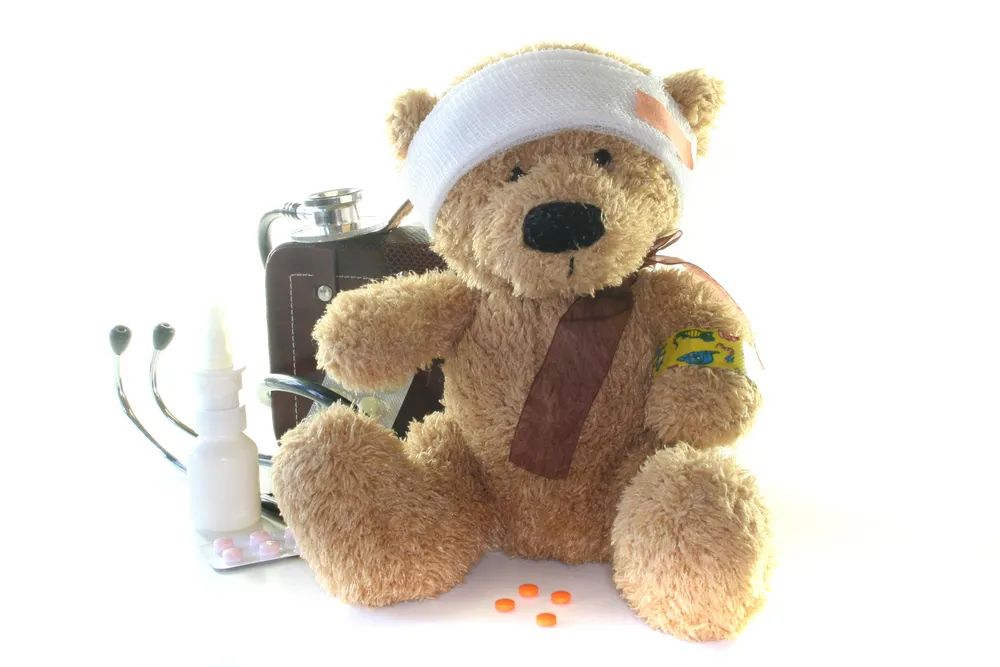Parenthood can be the greatest joy, and with it comes great responsibility of keeping your child safe and healthy. Even with the most careful and best-prepared parents, childhood injuries can happen. When they do, you, as the main caregiver, are by default, the first responder.Bruises are usually marked by pain, swelling and discolouration of the skin, commonly seen after blunt trauma or a fall. It is important to ensure that your child is well, alert and conscious, with no other significant injuries (e.g. head injury) to other parts of their body.
To reduce the swelling, place an ice pack (or ice wrapped in a towel) on the affected area for up to 15 minutes. Avoid placing ice directly on the skin as it can be extremely uncomfortable or painful for your child.Where possible, elevate the bruised region (e.g. the lower leg) as this will help prevent blood pooling in the bruised tissue and reduce the associated swelling.
While most bruises will heal and resolve within a week, any bruise caused by extreme force, especially if accompanied by severe pain, should be medically examined early to exclude internal injuries (e.g., a fracture). Additionally, unexplained bruising, in the absence of any known trauma or fall, may be a sign of a bleeding disorder. In such circumstances, it is best to seek medical advice.Head injuries may include obvious injuries such as bleeding or bruising, or less apparent symptoms such as headache, loss of balance and drowsiness, amongst others. In infants and young children, non-specific signs may include persistent inconsolable crying, poor feeding, and repeated vomiting.
For severe head injuries (e.g., fall from a great height or road traffic accident), please call for an ambulance.While waiting, try not to move your child and keep them still. Avoid moving their head and neck, and if they are wearing a helmet, do not remove it to avoid causing further injury.If there is bleeding, apply firm pressure using a piece of clean cloth or gauze.
For less severe head injuries that appear stable with no apparent symptoms, you may still consider bringing your child to a doctor for a thorough evaluation, especially for infants.Deep cuts and punctures, animal bites, and cuts that continue to bleed even after applying pressure require medical attention. This may include a thorough inspection and exploration of the wound, suturing of the laceration, antibiotics, and anti-tetanus vaccination.
Rinse the wound with clean water and apply firm pressure using sterile gauze, a bandage or a clean towel. If blood soaks through the bandage, place another bandage on top of the first and continue to apply pressure.If possible, raise the injured body part above the level of the heart to slow the bleeding.Do not use a tourniquet or any other method to reduce blood flow.When the bleeding has stopped, a fresh bandage may be used to cover the wound.Accidental inhalation or consumption of common household cleaners and chemicals, as well as overdose of medications, can be very dangerous for young children and requires immediate medical assessment. Signs of poisoning can be non-specific and may include difficulty breathing, vomiting, nausea, abdominal pain or cramps, and fits or convulsions.
Call an ambulance for emergency assistance, especially if your child is having seizures or looks ill.If your child has unfortunately stopped breathing, please perform cardiopulmonary resuscitation (CPR) if you have been previously trained.If your child is conscious, keep them calm while seeking medical attention.Ask them to spit out any residue of the poison in their mouth but do not force your child to vomit as this may do more harm than good.Try to find out the possible substance consumed so you can inform the doctor – look for nearby medicine containers or open bottles of chemicals and cleaners.
Scalds, caused by steam or hot water, and burns, caused by an iron or fire, can be extremely painful and cause the skin to turn red, peel or blister. Severe burn injuries may require specialised procedures and dressing under sedation, antibiotics, and anti-tetanus vaccinations.
Remove your child from the source of the burn or scald.Remove any clothing or accessories over the burn or scald injury if they are not stuck to the skin.Do not break any blisters that may form.Hold the burn (or scald) under cool running water for 20 minutes. Do not use ice or iced water.Cover the burn loosely with a clean towel and seek medical attention.Do not apply any ointment cream or powder over the affected area prior to the medical assessment.
Even if the burn or scald does not seem to hurt much, it could still be potentially serious. Immediate medical care is required for burns involving a large body surface area, severe deep burns, electrical or chemical burns, as well as burns involving sensitive areas such as the face or genitals.Sprains involve injury to ligaments, while fractures are broken bones which may or may not break through the skin. In either case, the usual symptom is pain in the affected area that worsens with movement or when trying to bear weight on the affected limb.
Avoid moving or using the affected joint or limb, to prevent further injury.If there is an open fracture (i.e., broken bone breaking through the skin), avoid further movement to the limb and do call for an am balance.
For sprains, it will be useful to rest the injured limb, apply an ice pack (as tolerated) to the affected area, compress the swollen injured area with a bandage, and keep it elevated (this management is sometime better known as the acronym RICE – rest, ice, compression, elevation). Should the presumed sprain continue to cause persistent pain and swelling despite the above measures, it will be important to seek medical attention to exclude a possible fracture, which may require an X-ray. Note that children younger than 5 years old are more prone to fractures rather than sprains.
Article reviewed by Dr. Martina Sunic Omejc, Pediatrician of Parkway.







